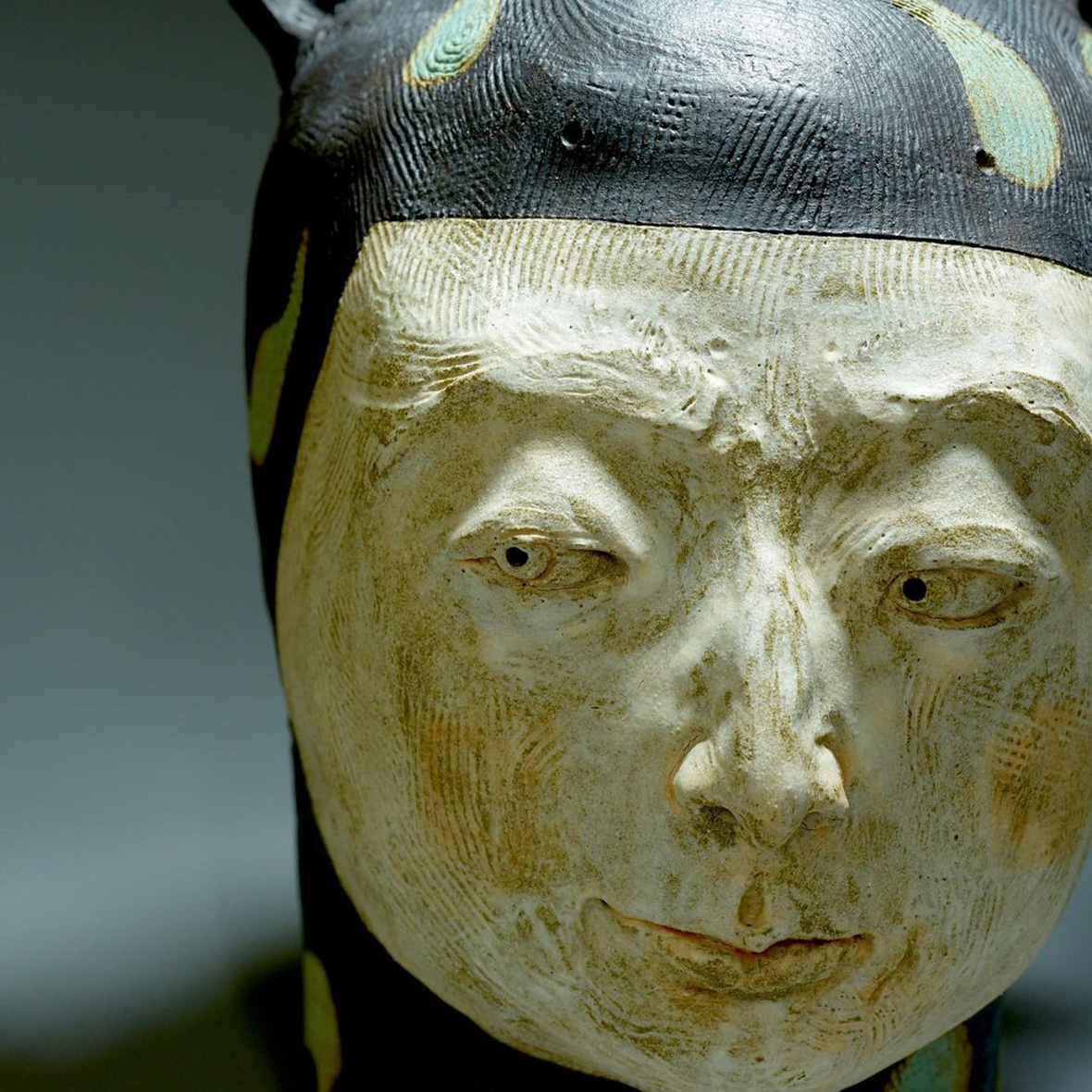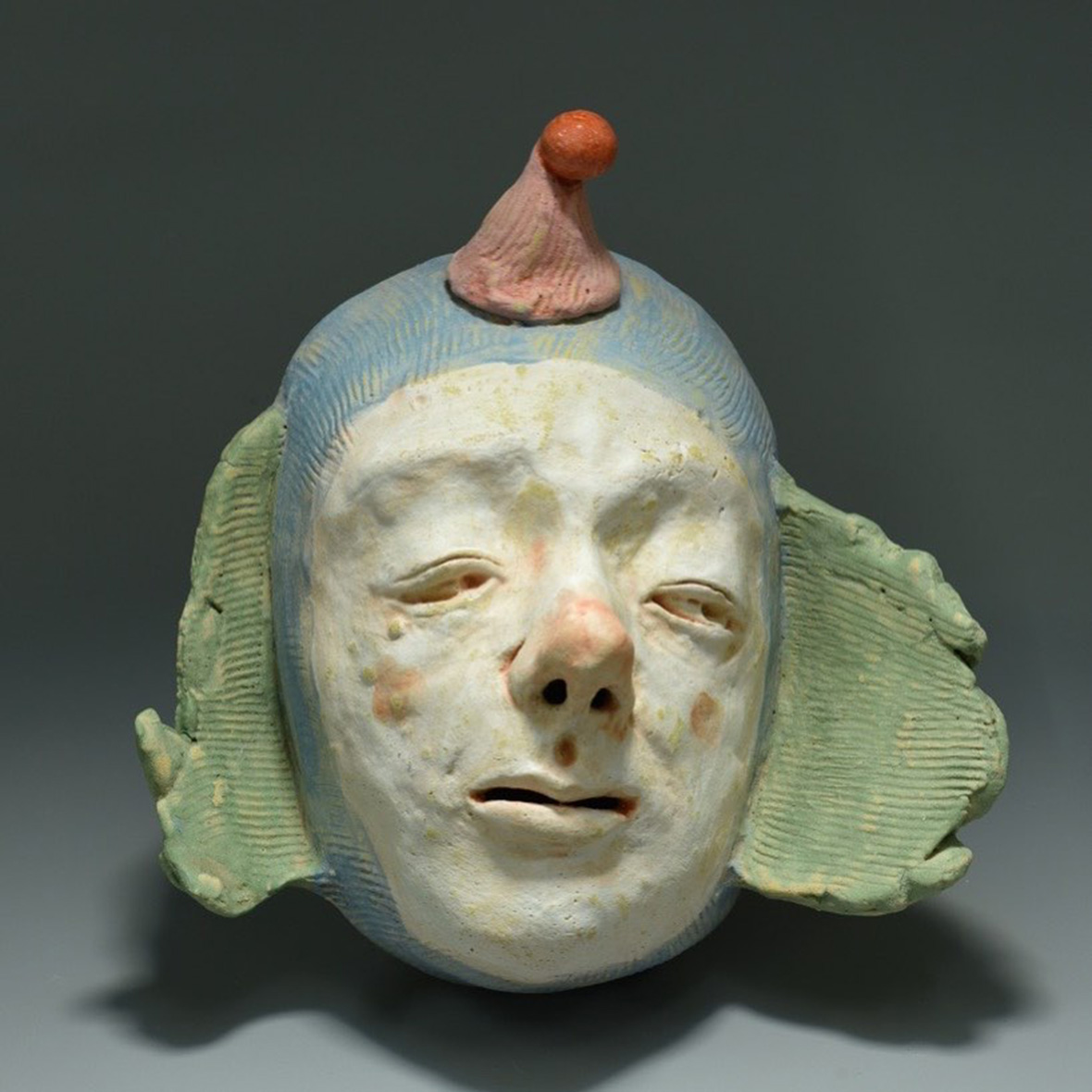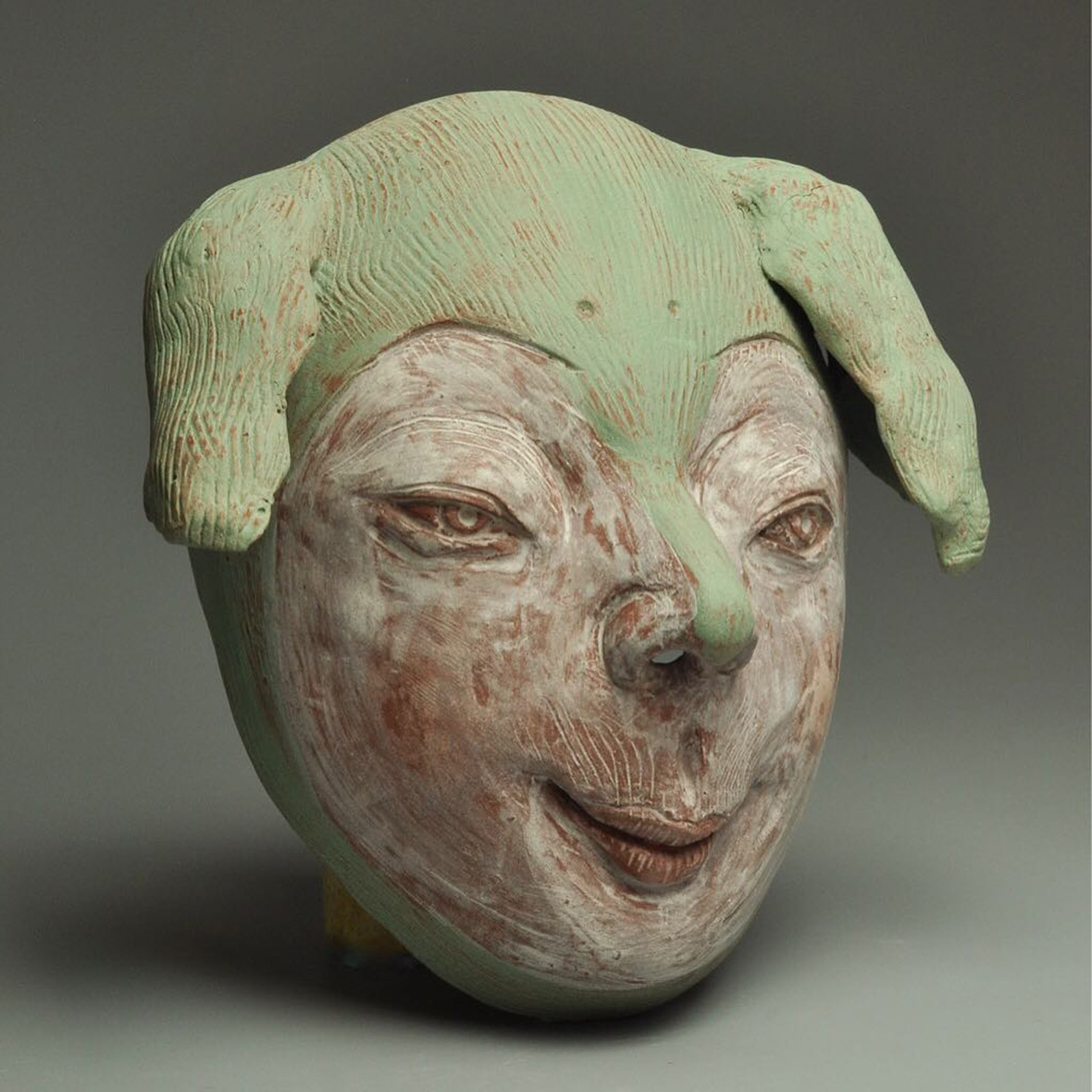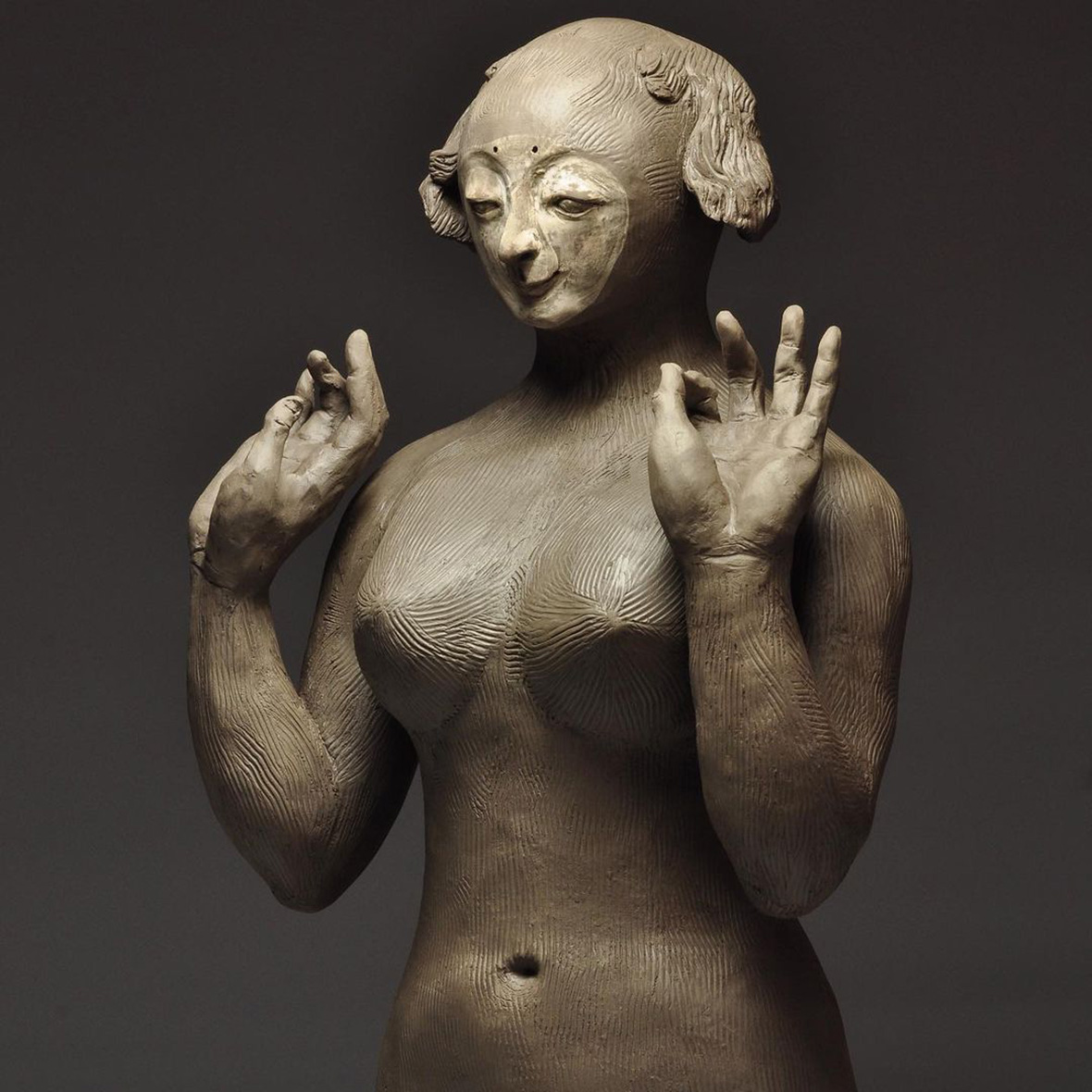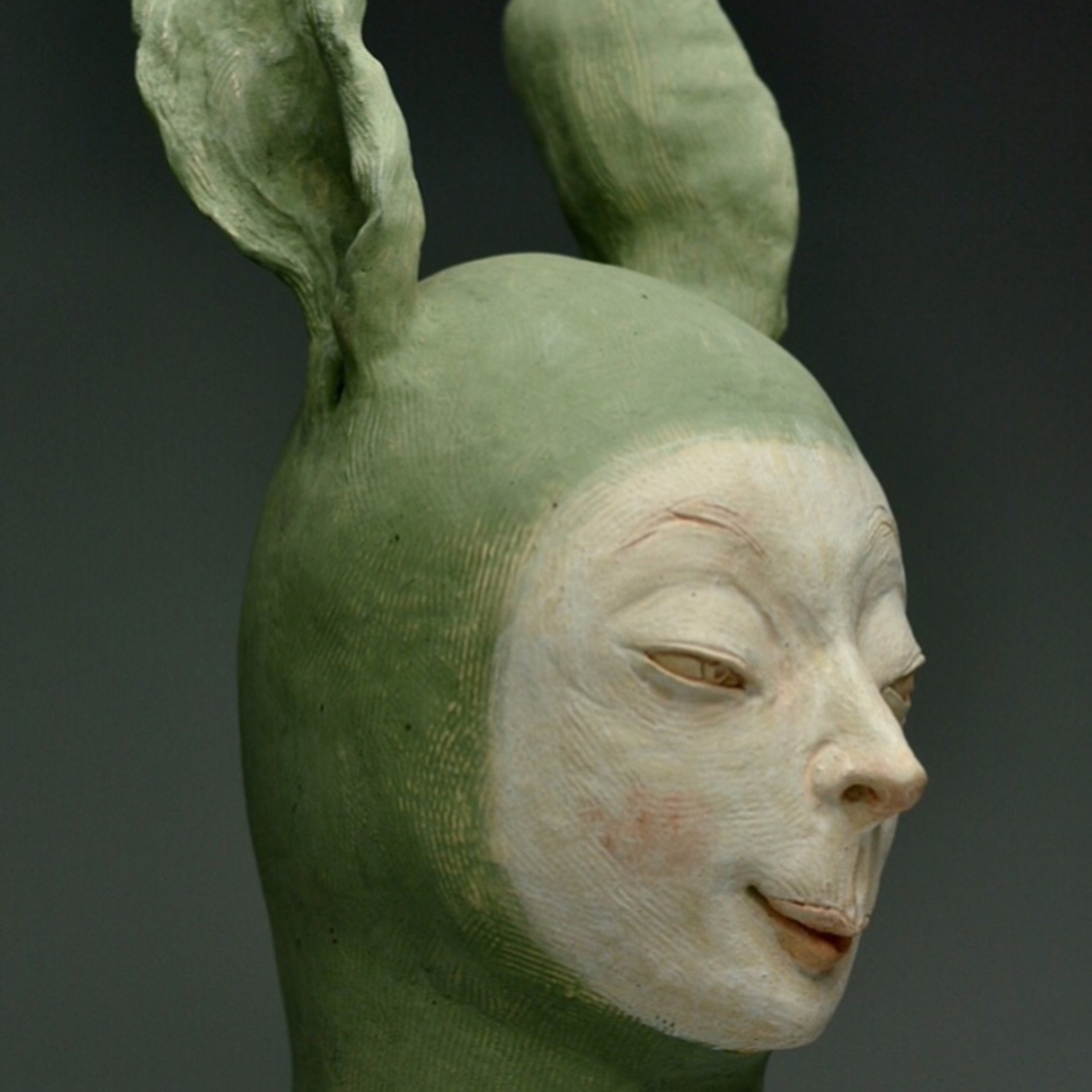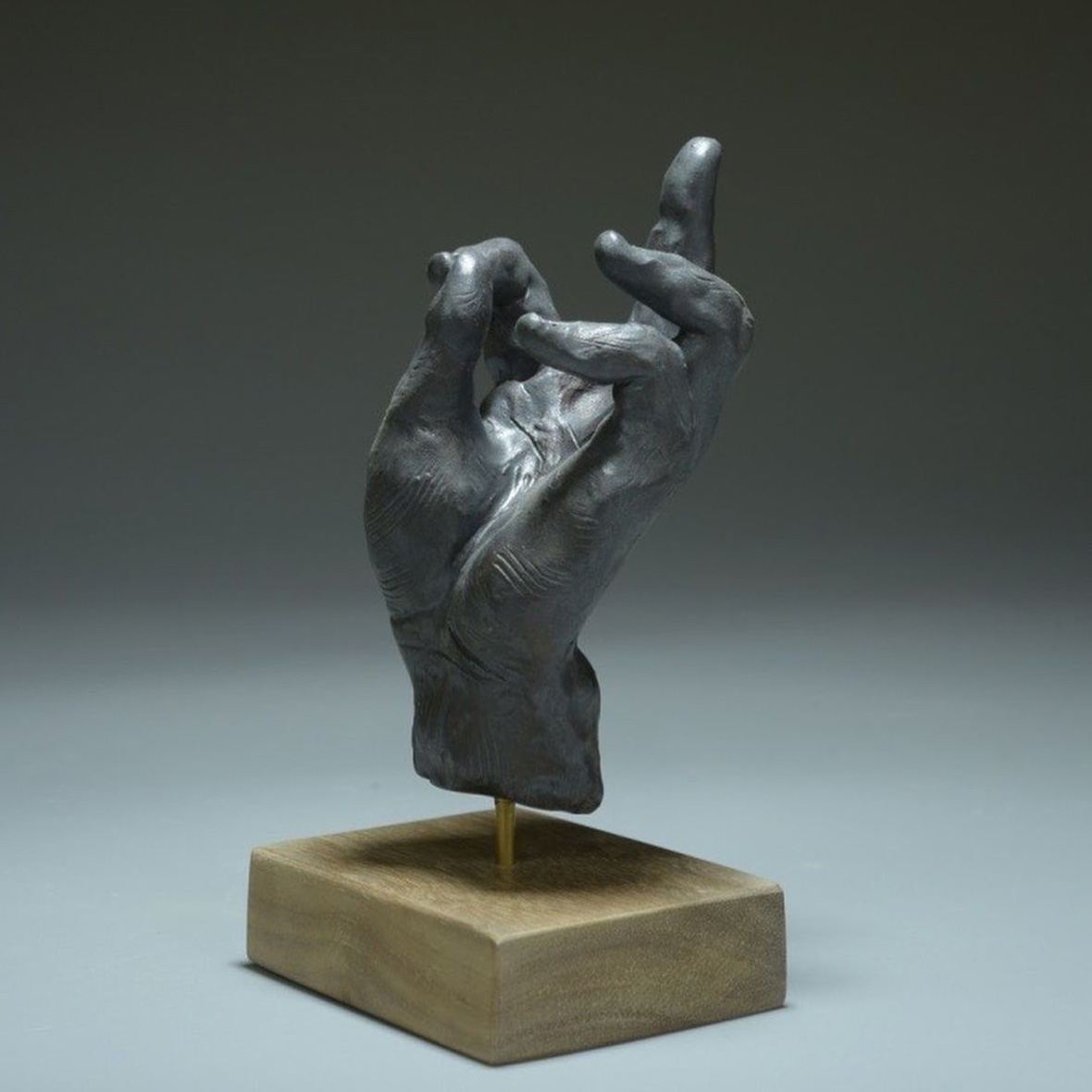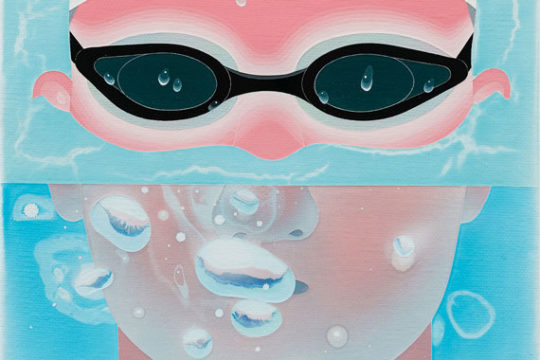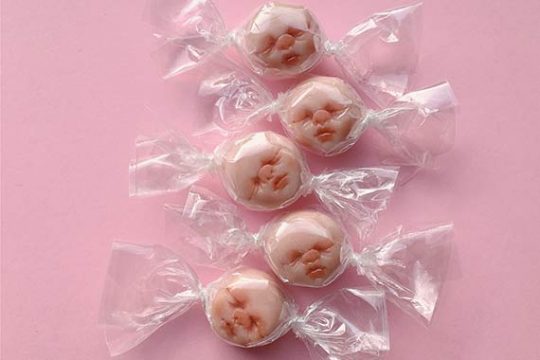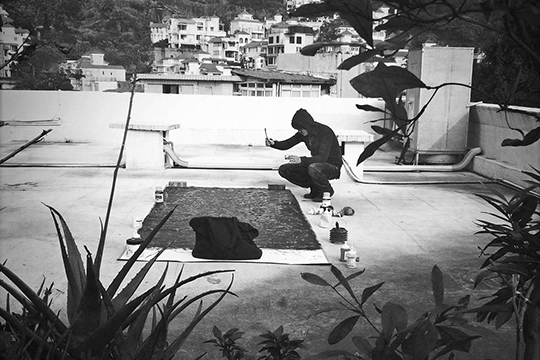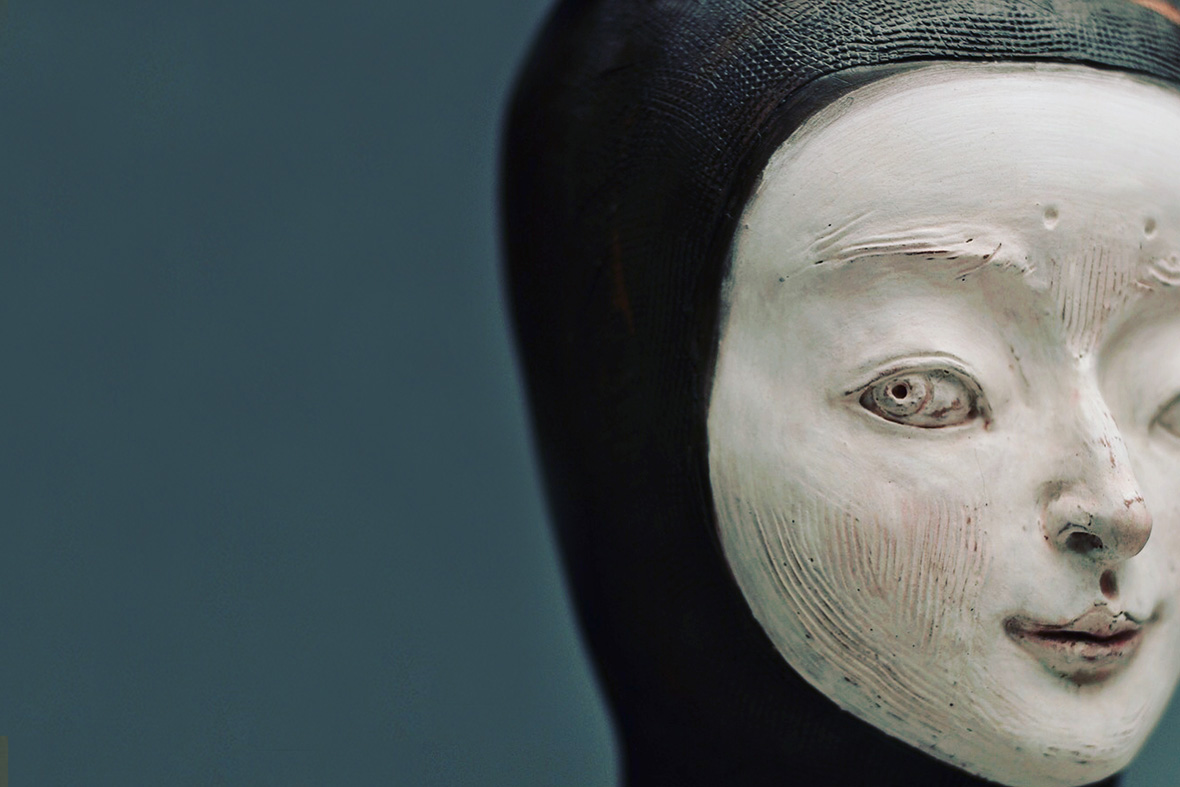
Though they’re smeared in clown make-up, the ceramic figures of sculptor Chao Harn Kae are far from jovial. Instead, they gaze on with indifference, glance around in suspicion, or carry blank stares. Even characters with their lips upturned don’t seem truly happy—their expressions seem closer to conniving smirks or mocking snickers.
A constant aura of anxiety simmers in the Malaysian artist’s works, and it’s all by design. As he sees it, negativity shouldn’t be ignored, but confronted. “The sadness and melancholy that manifest in my works reflect my mental state at the time of creation,” he explains. “But it’s not all doom and gloom. In times of despair, it’s important to find joy.”
马来西亚艺术家曹涵凱的陶塑角色看起来并不怎么开心。他们妆扮成小丑模样,却神情漠然,双眼空洞无神,疑虑地环顾四周,甚至连嘴唇上扬时也带给观众一种似笑非笑或是充满嘲讽的感受。
这种压抑和焦虑的氛围是曹涵凱作品中一贯的调性,是他有意而为。他认为,人本不应该刻意隐藏自身的消极情绪。“忧郁是我在创作过程中的状态,但并不完全是我想表达的内容。悲伤中寻找快乐的过程是比较重要的”,他说道。
But joy can be deceiving, especially in modern times, where our technologically inundated lives have conditioned us to put on a happy facade for our social feeds. The clown characters that Chao features so prominently in his work are a statement on this facet of existence. With their white face paint, they speak to the masks that people are now so accustomed to wearing in their day-to-day lives. “My art explores whether or not these facades people put up are required,” he says with a pause. “Or perhaps these facades aren’t facades at all, but who we actually are,” he says.
有时,表面的快乐带有一定的欺骗性,尤其在现代社会。科技泛滥的生活让人们在社交媒体上越来越浮于表面和一时。曹涵凱在作品中的小丑元素正是对此类现状的回应。这些惨白色的面孔,是人们在生活中习惯性伪装的假面具。“我想要探讨的是,人究竟是要戴面具而活、还是面具才是真正的自己?”他说道。
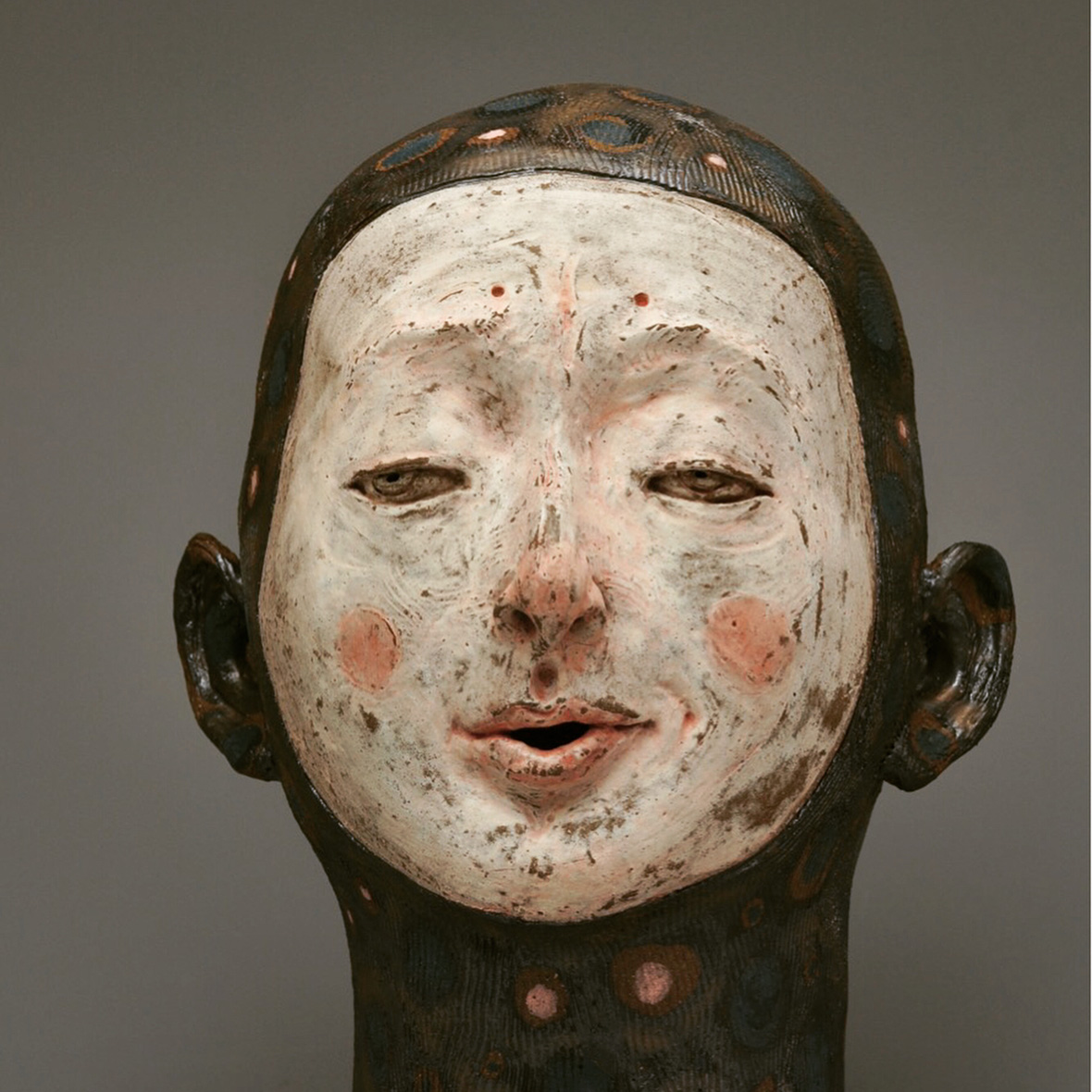
Chao’s clown-faced humanoids also have an uncanny resemblance to animals at times, often appearing with horns, snouts, or the ears of various wildlife. These features are also meditations on human behavior. “I grew up in the countryside, and my father was a farmer, so animals were a big part of my childhood,” he explains. “Moving to the city as an adult, I noticed that urbanites sometimes don’t even feel as ‘human’ as animals. These works examine whether humans have a tendency to conduct themselves like animals or whether animals have a tendency to conduct themselves like humans.”
这些人形陶塑偶尔也会出现动物的特征,譬如长着犄角、或是某种动物的鼻子与耳朵。这些特征探讨的则是人类行为的另一面。曹涵凱解释道:“我从小在马来西亚郊区长大,父亲是农夫,因此身边有很多动物倍伴一起成长。长大后在城市生活,我发觉城市人不如动物有人性。所以我想在作品中探讨人性中有动物的灵性,还是动物中有人性的关糸。”
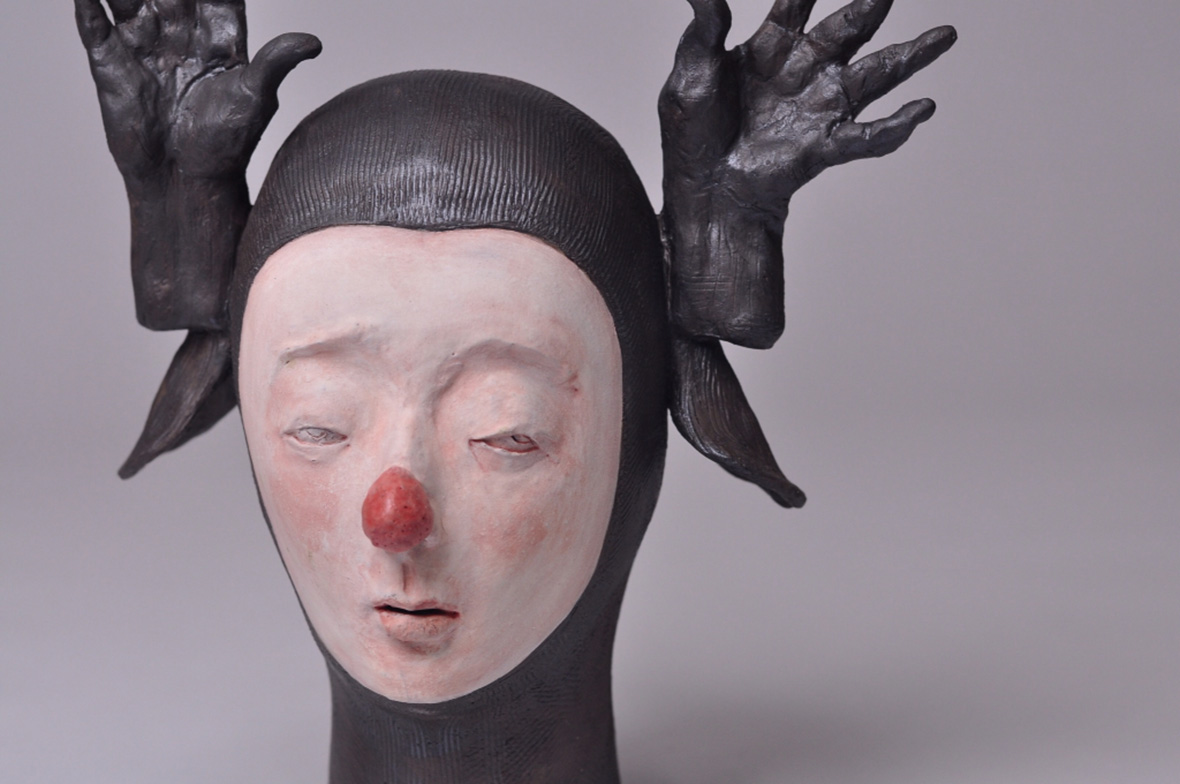
Aside from the clown faces and animal features, another recurring motif of Chao’s work is the presence of human hands. In one sculpture, an otherwise realistic hand traverses into the realm of the fantastical as five faces surface from atop the fingerprints—each digit appears to be engaged in a heated conversation, with the middle finger looking dumbfounded as the rest get their say in.
In No War Please!, Chao created a red-nosed figure with a pair of human hands acting as its horns; they’re held up in surrender as if being held at gunpoint. Beneath, the character looks terrified. In other pieces, lone human hands convey similar despair. Some reach up towards something unseen, almost as if they belonged to a drowning victim desperate for a gasp of breath.
Even without other contextual cues, Chao’s disembodied hands are incredibly expressive, conveying emotions that can be understood universally. “Hands are one of my favorite subjects; I even consider them a second face of sorts,” he says. “They’re complicated but delicate and have the ability to capture emotion—it’s perhaps even more expressive than speech.”
曹涵凱作品中另一个反复出现的元素,是人手。在一件雕塑作品中,五个指尖分别浮现出五张面孔,十分魔幻。各个手指头之间似乎在激烈争辩什么,有的手指目睹这场争论,露出不以为然的表情。在作品《No War Please!(请不要开战)》中,曹涵凱所塑造的红鼻子角色头上长出了一对人手状的犄角,正以投降姿势高高举起,仿佛正面临某种威胁,流露出惊恐的神色。
即使没有其他语境线索,曹涵凱的这些手也有着极强的表现张力,传达出直白、易见的情绪。他说:“手是我最喜欢的创作元素之一,甚至可以比喻为第二张脸。手是非常复杂的结构,又是非常细致丰富的,我认为手可以表达内心变化的感受,是比言语还丰富的体系。”
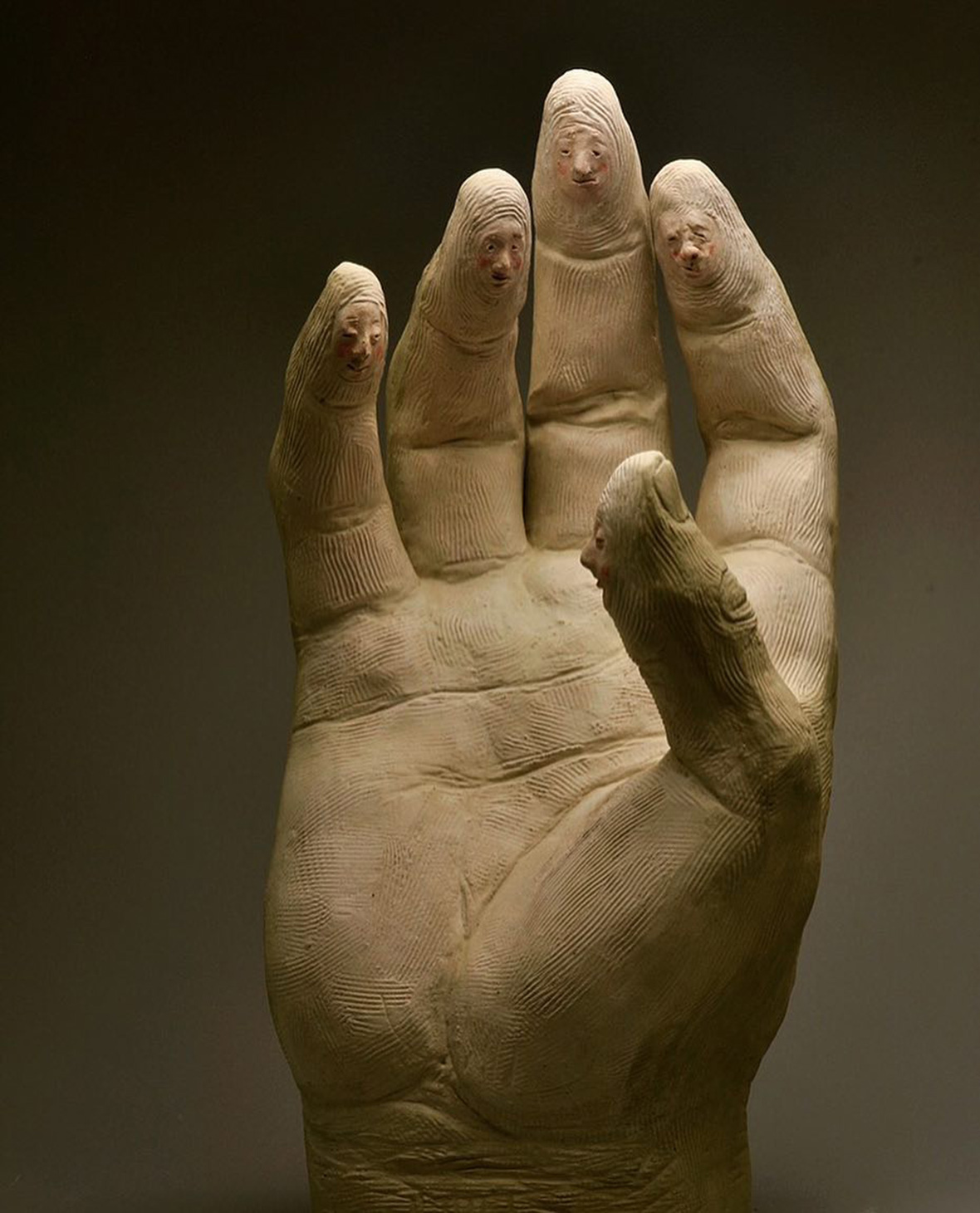
Whether it be through gesticulation or demeanors, Chao has a clear talent for sculpting realistic emotions. He chalks it up to a willingness to stay in touch with his inner self, which has taught him the importance of seeing through a lens of compassion and empathy. “When I create, I tap into my turbulent emotions, study them, and then through clay, I give them a tangible form; it’s cathartic in a way,” he says. “Everyone experiences negative emotions, but it’s crucial to face them. I consider myself as an optimist who isn’t afraid of confronting cynicism.”
从各种手势到神态不难看出,曹涵凱偏爱在雕塑中呈现真实情感。他将其归功于自己以同理心看待世界的能力,以及对过去经验的借鉴。他说道:“每个人都有负面情绪,勇于面对是人生的学问。创作时我会发觉内心的起伏,平静观察;引出内心的情绪表达在泥塑中,而得到内心疗愈。我就是个勇于面对负面情绪的乐观者。”
Like our stories? Follow us on Facebook and Instagram.
Instagram: @chao_hk
Behance: ~/chaoharnkae
Contributor: David Yen
Chinese Translation: Olivia Li


